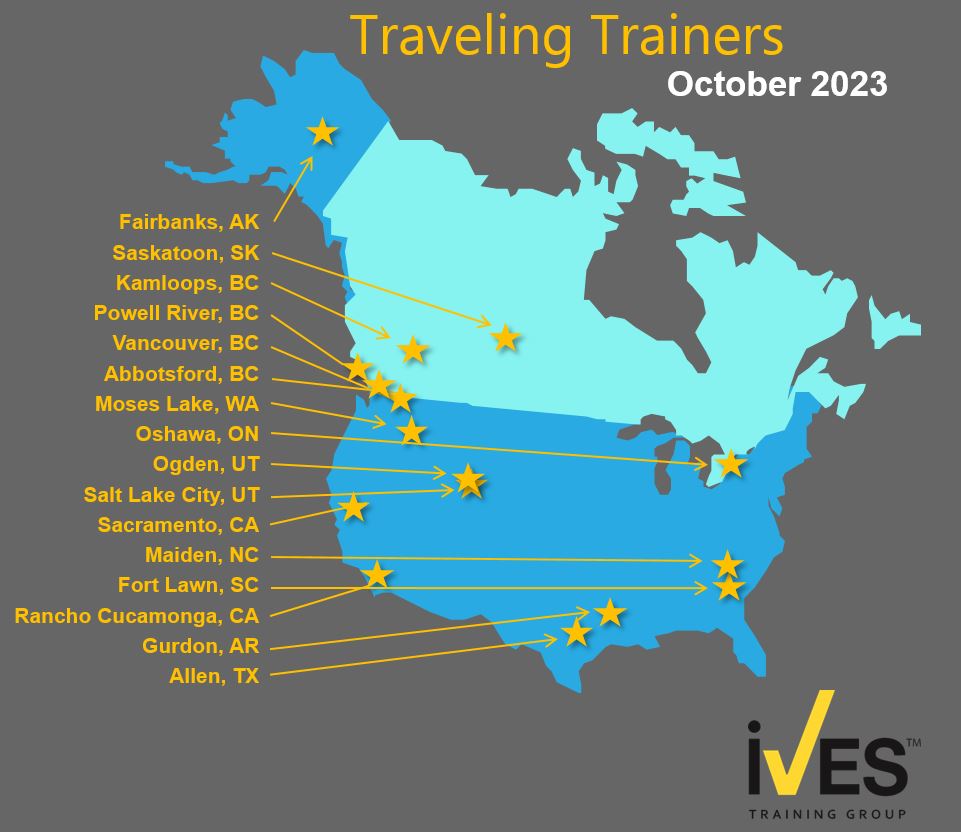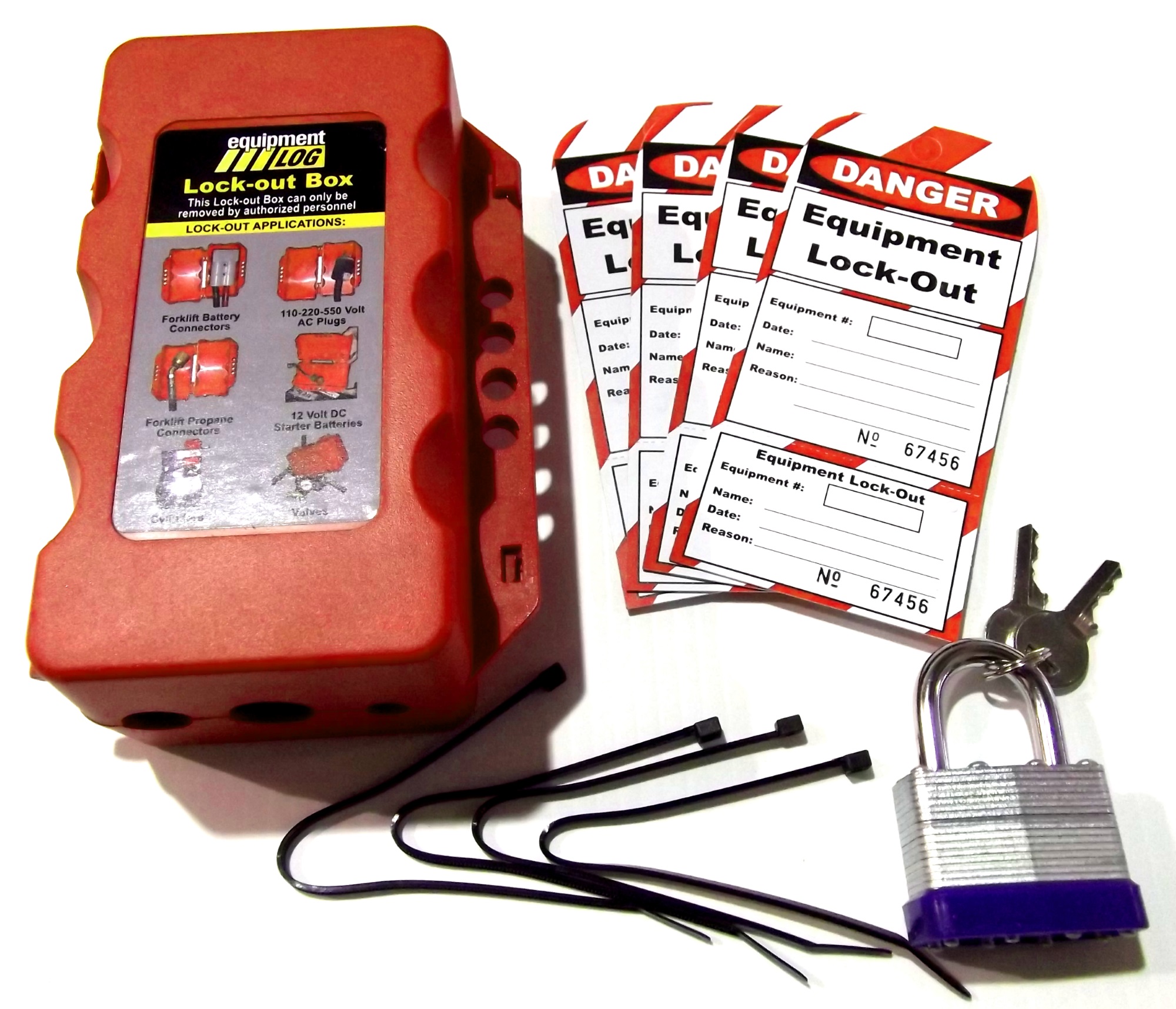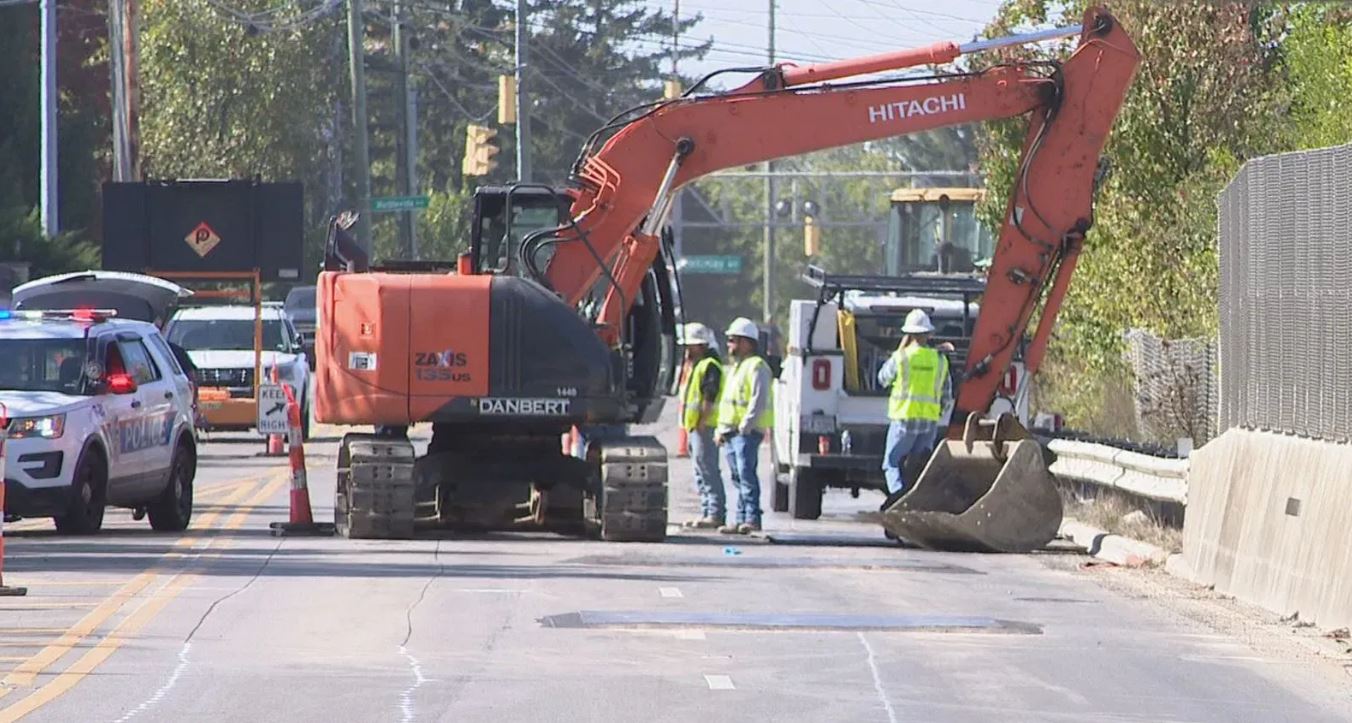In this issue, we will be covering:
- Feature Article: Six ways pedestrians can keep safe around forklifts.
- Spanish Narrow Aisle Operator training materials released
- Incident Report: Company fined $93k after worker killed by forklift.
- Product Feature: Safety Equipment & Accessories.
- Ask Bob: Our tech guru answers a question about previously certified IVES operators.
- A selection of interesting articles.
- New testimonials from our wonderful clients.
But first, check out all the places we are delivering training this month...

Six ways pedestrians can keep safe around forklifts
 Contrary to popular belief, should a forklift accident occur, it is not the person on the truck who is most at risk.
Contrary to popular belief, should a forklift accident occur, it is not the person on the truck who is most at risk.
Pedestrians in the vicinity have little protection against injury, especially if they don’t understand how to recognize potential risks and keep themselves (and others) safe.
Pedestrians can include colleagues working on foot, site visitors, delivery drivers, staff members from other areas of the company and even forklift drivers themselves, once they have dismounted from their trucks.
Anyone who may find themselves near to moving materials handling equipment (MHE) is at risk.
Ultimately, it is the responsibility of forklift operators (and their managers/employers) to ensure forklifts are used safely on site and operator training, safe systems of work and regular monitoring will undoubtedly help to create safer operations.
But basic awareness training can also significantly reduce risk for this vulnerable group. So what steps can pedestrians take?
- Use pedestrian walkways/zones: Inadequate segregation between trucks and pedestrians poses a huge risk to safety. Forklifts and people on foot should be separated, wherever possible, ideally by physical segregation using barriers, designated zones and separate traffic routes to keep them apart. Walkways should always be used where available.
- Adhere to safe systems of work: Where total separation is not feasible and staff are required to perform tasks in a shared area, there should be other control measures in place to keep them apart. Safe systems of work (SSOW) – based on risk assessments of specific tasks – will ensure that all parties understand how to carry out their duties safely. These should be communicated to all who may be affected and must be followed day in, day out.
- Keep a safe distance from MHE: This is a fundamental principle which everyone should follow throughout their time on site to reduce risk, and should be part of a SSOW. Sadly, many injuries occur when pedestrians find themselves too close to forklift trucks when they do not need to be there in the first place. When deciding on a safe distance, consider the specific nature of the operation, e.g. if a forklift is unloading from height, leave more distance as, in the event of a tip over, the area covered by the falling mast and load will be larger.
- Wear personal protective equipment (PPE): Pedestrians must wear any PPE issued to them by their employer for their safety, such as high vis jackets and safety boots. Not only is this good practice, it is also a legal requirement upon the employee.
- Follow signage: Take note of any posters and signs positioned around site, and follow the safety measures, guidance and travel routes.
- Report bad practice: Staff must be mindful not only of their own safety, but also that of their peers, and while managers have an obligation to monitor behavior, there may be times when it is necessary for a staff member to flag the actions of others. Unsafe forklift operation or disregard for safe travel routes are examples of bad practice that should be reported to a supervisor for the safety of everyone on site.
Training for all
Forklift awareness training for operators and pedestrians alike allows everyone to understand the importance of following safety measures, and the potential consequences if they don’t. These types of courses emphasize to all parties the need to remain alert to their surroundings and maintain safe distances between MHE and pedestrians at all times. By increasing forklift safety awareness across the board, you can ensure that everyone is equipped to contribute to a safer site.
Source: Forklift Action October 2023
Updated Spanish Narrow Aisle Released!
We are very happy to announce that new Narrow Aisle Forklift operator training materials released on September 19th are now also available in Spanish.
The new Spanish materials include the Narrow Aisle Operator Reference Manual, Operator Theory Test, Requalification Study Guide and Requalification Theory Test.
Incident Report: Company fined $93k after worker killed by forklift
 A Newmarket, Ont.-based construction company has been fined more than $93,000 after a worker was killed by a forklift during the construction of an apartment building — underscoring the importance of having a signaler assist when vehicles don’t have clear lines of sight.
A Newmarket, Ont.-based construction company has been fined more than $93,000 after a worker was killed by a forklift during the construction of an apartment building — underscoring the importance of having a signaler assist when vehicles don’t have clear lines of sight.
2671475 Ontario Inc., the constructor of an apartment building on Cemetery Road in Uxbridge, Ont., subcontracted the erection of retaining walls to an excavation and site servicing company.
The job entailed moving pallets of blocks with a forklift designed for movement on rough terrain. The machine had a telescoping boom with a forklift attachment.
On Nov. 30, 2021, a worker, employed by the subcontractor, asked the forklift operator, who was employed by the defendant, to move four pallets of blocks from the front of the project to the rear.
After dropping the fourth pallet at the rear, the forklift operator proceeded to reverse the machine back to the front of the project.
To provide signaling assistance, the contract worker moved to the right side of the forklift, then stepped closer to the machine’s rear wheels to ensure the operator could see their hand signals.
Shortly after, the operator lost sight of the contract worker in the passenger sideview mirror and immediately stopped the machine.
Although there were no witnesses to the incident, the evidence appears to show the worker slipped on snow and mud, falling under the wheel of the moving vehicle.
The worker was fatally injured.
An investigation by the Ministry of Labour, Immigration, Training and Skills Development determined the forklift’s right-side mirror had limited visibility due to its positioning and blockage by the machine’s boom and hoses. As the operator did not have a clear view of the path of the machine’s travel, it was required that a signaler assist.
Contrary to the signaler requirements of the Regulation, the contract worker was not in full view of the forklift operator and was not clear of the intended path of the machine’s travel.
By failing to provide a signaler, as outlined in section 104(3) of Ontario Regulation 213/91, 2671475 Ontario Inc. violated section 23(1)(a) of the Occupational Health and Safety Act.
Following a guilty plea in the Ontario Court of Justice, 2671475 Ontario Inc. was fined $75,000. The court also imposed a 25 per cent victim fine surcharge as required by the Provincial Offences Act, bringing the total fine to $93,750. The surcharge is credited to a special provincial government fund to assist victims of crime.
Source: OHS Canada October 2023
Product Feature: Safety Equipment & Accessories
 Safety equipment & accessories are necessary to make sure your operators stay safe and comfortable on the job.
Safety equipment & accessories are necessary to make sure your operators stay safe and comfortable on the job.
Personal Protective Equipment (PPE) is an absolute must for all forklift, mobile elevating work platform and loader operators who are responsible for propane and battery handling.
Forklift accessories like weather guards will help protect your forklift operators from the elements.
Also check out our IVES promotional gear including neck lanyard with ID holders, carrying cases and hats!
Ask Bob
 Question:
Question:
Hi Bob,
I have a number of new employees who had forklift certification through Ives from a previous job.
I was wondering if the certification is transferable or do they need new certification?
Answer:
If you do not have anything else but wallet cards and certificates from the operators, then a complete training program must be conducted with the new employees.
If you have copies of their actual tests and evaluations at the previous workplace and it shows that the equipment and conditions they were exposed to at their previous job were similar to those at your site, then you could have a trainer bring them up to speed on any company-specific safety policies and conduct practical evaluations with each operator on your equipment at your worksite to be in compliance.
Bob
Interesting Articles
- Children employed to illegally operate forklifts...more.
- Video clip shows how a harness saves an operator from serious injury...more. [VIDEO]
- How to prevent skid-steer loader injuries…more.
- Forklift accident fines issued in Canada, Singapore...more.
- Man goes on rampage with Rough Terrain Telehandler...more. [VIDEO]
- Boom lift tips crawler crane...more. [VIDEO]
- Construction Company fined $75k in forklift fatality...more.
- Police office injured after Excavator backs into him...more. [VIDEO]

Client Testimonials
 "Very well organized. IVES really has done an outstanding job with instruction and all the training tools available for future instructors"
"Very well organized. IVES really has done an outstanding job with instruction and all the training tools available for future instructors"
Myron F, Premium Combo Train the Trainer
"I really enjoyed this class, learned new things and I feel like it has made me a better and more knowledgeable trainer."
Mark B, Loader Group Train the Trainer
Did you enjoy this newsletter? Sign up for our newsletter to receive more like this!